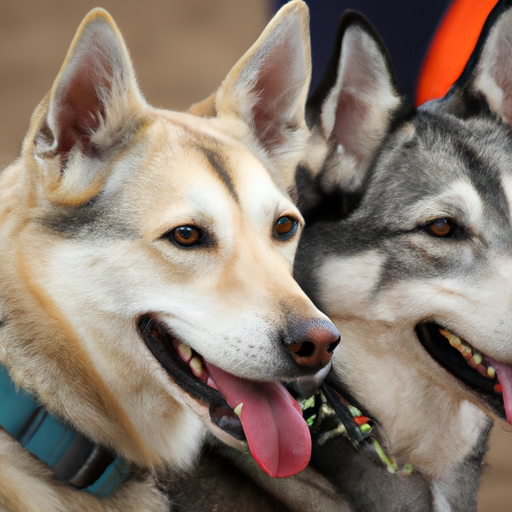Introduction
Hello, you wonderful caregivers out there. Today, we’re going to delve into a fascinating topic that will no doubt pique your curiosity – dogs that bear a striking resemblance to wolves. As you sit there, comfortably nestled in your favorite chair, let’s embark on this exciting journey together and learn about these magnificent creatures.
H2: Understanding the Wolf-Like Features in Dogs
You might wonder, “what makes a dog look like a wolf?” The answer lies in certain distinctive features. Let’s explore them one-by-one.
- Ears: Wolf-like dogs often have pointed ears that stand erect.
- Eyes: They generally possess almond-shaped and light-colored eyes.
- Tail: Their tails are typically straight and bushy, much like a wolf’s.
- Coat: These dogs have a dense double coat, akin to their wild counterparts.
- Size: They are usually medium to large-sized breeds.
H2: Top 5 Dogs that Resemble Wolves
Now that you’ve got a grasp on the wolf-like features, let’s dive into the breeds that resemble wolves the most.
- Alaskan Malamute: Known for their strength and endurance, these dogs are truly reminiscent of wild wolves.
- Siberian Husky: With their striking eyes and furry coat, they could easily be mistaken for a wolf.
- German Shepherd: Their sharp ears and wolf-like facial structure make them a clear contender.
- Samoyed: Although they are fluffy and white, their size and facial structure bear similarities with Arctic wolves.
- Canadian Eskimo Dog: This breed’s overall demeanor and appearance strongly resemble that of a wolf.
H2: The Care and Keeping of Wolf-Like Dogs
Before you rush off to adopt one of these beautiful creatures, it’s important to understand their unique care requirements.
- Exercise: These breeds require plenty of exercise to keep them healthy and happy.
- Grooming: Regular grooming sessions are essential due to their thick coats.
- Training: Early socialization and obedience training are key due to their strong-willed nature.
| Breed | Exercise | Grooming | Training |
|---|---|---|---|
| Alaskan Malamute | High | High | Moderate |
| Siberian Husky | High | Moderate | High |
| German Shepherd | High | Moderate | High |
| Samoyed | Moderate | High | Moderate |
| Canadian Eskimo Dog | High | High | High |
H2: The Ethics of Breeding Wolf-Like Dogs
As much as we love the idea of having a wolf-like companion, it’s crucial to consider the ethical implications.
While breeding dogs for wolf-like features can result in beautiful and unique breeds, it often raises ethical questions. It’s essential to remember that the health and wellbeing of the animal should never be compromised for aesthetic purposes.
FAQ
Q1: Are wolf-like dogs dangerous?
A: No, they’re not inherently dangerous. Their behavior mainly depends on their upbringing and training.
Q2: Can wolf-like dogs live in warm climates?
A: While they’re better suited for colder climates due to their thick fur, they can adapt to warmer climates with proper care.
Q3: Are wolf-like dogs high maintenance?
A: Generally, yes. They often require a lot of exercise, grooming, and mental stimulation.
Remember, as caregivers, your role is crucial in ensuring these wolf-like dogs lead a happy and healthy life. They might be a bit more work, but the love and companionship they offer are worth every bit of effort.



